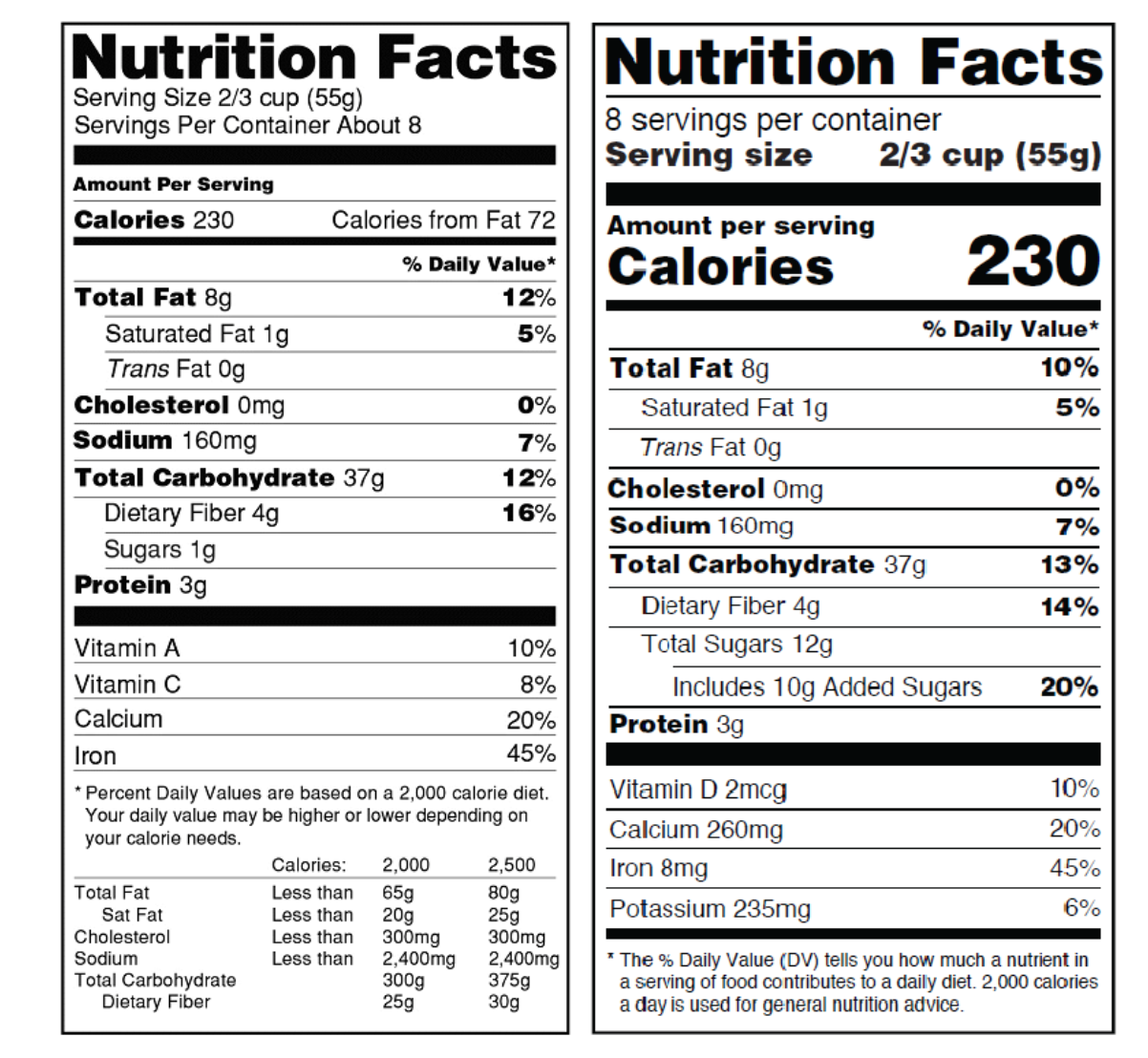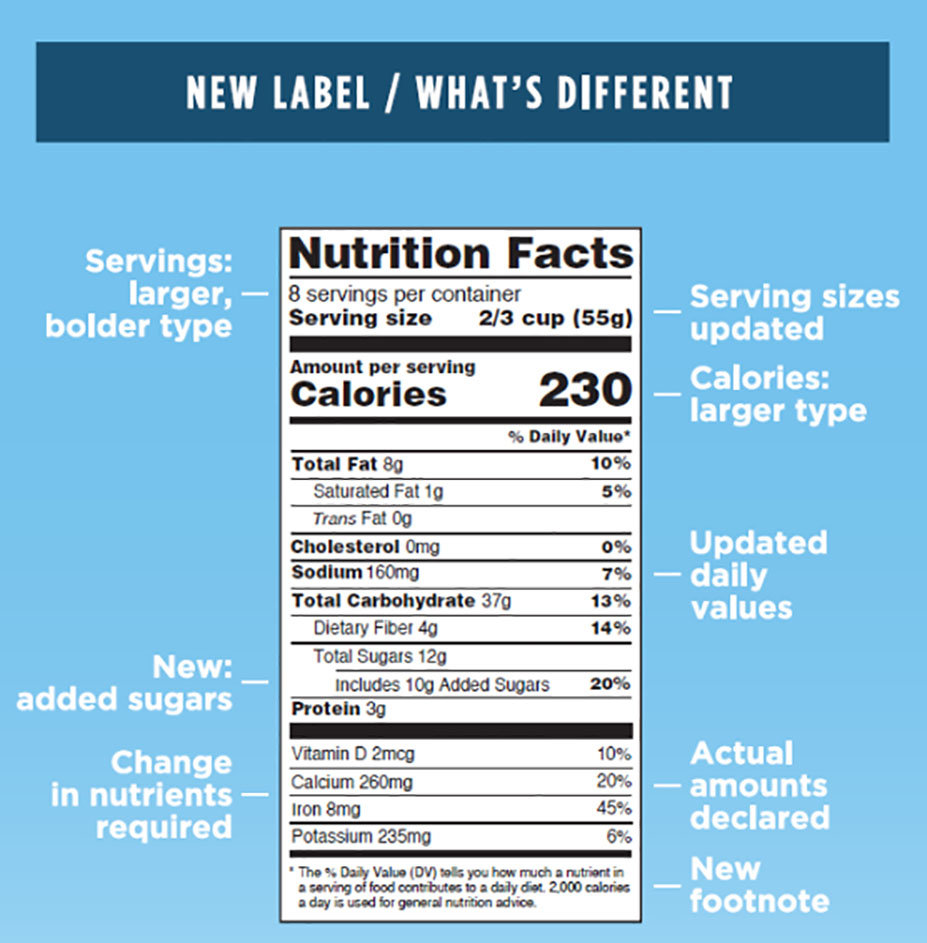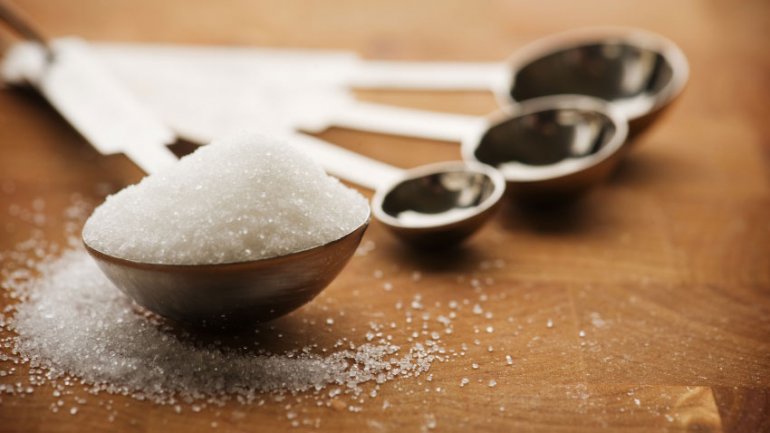There are changes happening in the realm of Nutrition Labelling and it’s incredible news for all Americans!
What’s going on?
Following 20 years of the same obsolete nutrition panel, the FDA has declared its arrangements to change the nourishment name to reflect overhauled sustenance exploration and more sensible ways (and sums) that we expend sustenances.
What’s changing?
There are various things that will change on the label. You can see the full FDA Nutrition Label report here. We’ve highlighted the most vital changes for every one of us as customers beneath:
1. Calories And Serving Sizes The type size for “Calories,” “servings per container,” and the “Serving size” declaration, and bolding the quanity of calories and the “Serving size” assertion to highlight this data. Some serving sizes will increment whilst others will diminish because, in light of the fact that, by law,, the serving sizes must be founded on the measures of nourishment and beverage that individuals regularly consume,, not on how much they ought to devour.
For instance, the reference amount used to set a serving of ice cream was beforehand ½ cup and now is changing to ⅔ cup. The reference amount used to set a serving size of soda drinks was already 8 ounces and is now changing to 12 ounces. The reference amount for yogurt is decreasing from 8 ounces to 6 ounces. Nutrient data on the new label will be based on these overhauled serving sizes so it matches what individuals actually consume.
2. Genuine quantities Of Vitamin D, Calcium, Iron, and Potassium Will Be Listed. Manufacturers must announce the actual amount, in addition to percent Daily Value of vitamin D, calcium, iron, and potassium. They can voluntarily proclaim the gram amount for other vitamins and minerals.
Vitamin D and potassium are nutrients that Americans don’t generally get enough of, according to nationwide food consumption surveys, and when lacking, are connected with increased risk of chronic sickness. Vitamin D is important for its role in bone health, and potassium helps to lower blood pressure. Calcium and iron are now required and will continue to be on the label.
3. Fat Gets The Green Light While continuing to require “Total Fat,” “Saturated Fat,” and “Trans Fat” on the label, “Calories from Fat” is being removed because research shows the type of fat is more important than the amount.

And the most substantial, and possibly most exciting change of all that has the sugar industry reeling:
4. Added Sugars Will Be Revealed! “Added sugars,” in grams and as percent Daily Value will be included on the label. Scientific data shows that it is difficult to meet nutrient needs while staying within calorie limits if you consume more than 10 percent of your total daily calories from added sugar, and this is consistent with the 2015-2020 Dietary Guidelines for Americans.
Why? It is difficult to meet nutrient needs while staying within calorie requirements if you consume more than 10 percent of your total daily calories from added sugars.
On average, Americans get about 13 percent of their total calories from added sugars, with the major sources being sugar-sweetened beverages (including soft drinks, fruit drinks, coffee and tea, sport and energy drinks, and alcoholic beverages) and snacks and sweets (including grain-based desserts, dairy desserts, candies, sugars, jams, syrups, and sweet toppings).
The Washington Post reports “Several major food associations, including (but not limited to) the American Bakers Association, American Beverage Association, American Frozen Foods Institute, Corn Refiners Association, International Dairy Foods Association and National Confectioners Association, fought vehemently to preserve the existing label. They waged a long, drawn-out battle against the new “added sugars” components, which lasted more than two years. In the end, they lost.”
“The hope is that the new label, which makes clear when a food manufacturer has relied heavily on sugar to make its product tasty, will help Americans make more informed choices about the foods they eat. The daily recommended limit is 50 grams of added sugar, which, as Politico pointed out, means a can of soda will look much less appealing to anyone who bothers to peek at the label.”
All of these changes are rolling out with changes to all products required by July 26, 2018, including foods imported to the United States.

Understanding exactly what you’re eating when you choose packaged foods is so important, and finally, we’re heading the right direction with clearer labeling.
JAMES COLQUHOUN, FILMMAKER (FOOD MATTERS AND HUNGRY FOR CHANGE)
Original Story and our Source: Food Matters
Source: FDA.gov



Recent Comments